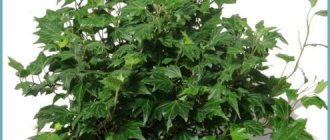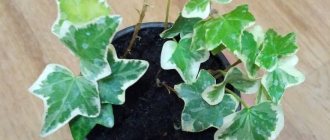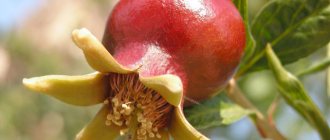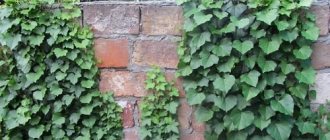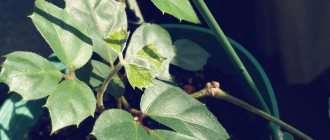Common indoor ivy (hedera) is a beautiful decorative flower, very popular due to its hanging looped stems with bright dark green leaves, which allows the plant to be used for interior decoration. Indoor ivy, the photo of which is presented below, goes well in compositions with fuchsia and pelargonium, but even when completely alone, the flower looks very attractive. From the article you will learn what types of indoor ivy (photo) and names exist, as well as how to care for the flower so that it becomes a decoration for the room.
Types and varieties of plants, appearance
Ivy belongs to the Araliaceae family and has the following varieties:
- garden;
- indoor;
- compact;
- large;
- with leaves of the same tone;
- variegated species.
The main advantage of indoor ivy is its ability to conquer heights and beautiful leaves. Ivy plants have a characteristic feature - adventitious roots: it is thanks to them that the vine clings to the support. If the indoor plant is not trimmed, the lashes can reach a length of 20 meters.
The leaves of the heder are beautiful, leathery, and can be of different colors and shapes. There are light green, shiny dark green, plain, green with a white border around the edge or green with yellow streaks. And thanks to the efforts of breeders, even flowers with purple leaves appeared. The shape of the leaves can be three or five lobed with pointed ends of the blades or rounded, with a small distance between the blades or strongly dissected.
The flowers of both outdoor garden and indoor ivy do not deserve attention: they are small and do not have a very pleasant smell, and they fade very quickly.
Transplanting a plant
After some period of time, you may notice that the plant needs a new place of residence. This can be seen by the roots creeping out from the bottom of the pot. In this case, choose a container two or three cm larger than the previous pot.
Before transplanting, the plant is watered. A drainage layer is placed at the bottom of the new container and the plant is lowered into the ground. It is recommended that the new soil contain sand and humus in equal proportions.
Where and how does it grow
In nature, evergreen ivy grows in countries with mild winters and humid summers. In the middle zone with frosty winters, the flower is grown at home.
Indoor ivy (photo) requires the following growing and maintenance conditions:
- The soil. The soil should be fertile and breathable - this will ensure beautiful, juicy and shiny leaves.
- Temperature conditions. From early spring to the end of October, keep ivy at a temperature of at least 22 degrees Celsius; in winter, the air temperature should not fall below 15 degrees Celsius.
- Watering. In the warm season, ivy requires watering 2-3 times a week: the soil must be moist all the time, since the flower does not tolerate drying out. In winter, watering is reduced to once every 2 weeks.
- Light. Ivy is known as a shade-loving plant: it can grow both in the back of the room and on the north side. However, complete shade will not do the flower any good, as direct sunlight (causes leaf burn), ideally diffused sunlight.
Benefit
The indoor ivy flower, the photo of which is presented below, evokes an ambiguous attitude among amateur flower growers. There are a lot of positive and negative signs associated with this decorative vine.
Lovers of indoor ivy note the following positive signs:
- In houses and apartments where ivy grows, there is always peace and mutual understanding between all family members, since ivy absorbs negative energy, reducing conflict.
- The flower has a positive effect on hyperactive children and relieves excessive excitability.
- The flower personifies fortitude and vitality, so it is simply necessary for timid and insecure people.
- If a flower blooms in a married woman’s house, then the husband is faithful to her, and their relationship is harmonious.
- Ivy absorbs the negative energy of people who come to the house with evil intentions and protects against the evil eye, envy and damage.
- There is also a widespread belief that if you keep indoor ivy in your office, then things will go well.
Description
Common indoor ivy (chedera) is a green vine that belongs to the Araliaceae family.
Usually lives in shady and humid subtropical forests of Europe, Asia and Africa. The plant has small adventitious roots, thanks to which it wraps around tree trunks, sometimes rising to a height of up to 30 meters. These roots provide additional nutrition for the entire bush. The presence of adventitious roots makes it possible to use indoor ivy in landscape design. According to popular belief, hedera is considered one of the most controversial plants. There are both positive and negative superstitions regarding this plant.
Thus, there is an opinion that indoor ivy brings happiness to its owners. This plant has calming properties, so it is recommended to purchase it for families with hyperactive children.
In some countries, ivy is believed to have a beneficial effect on romantic relationships. If an unmarried girl grows this plant, her chances of marriage will increase. For married women, ivy brings fidelity and great love in marriage. At the same time, in other countries they say that ivy climbing along the walls steals the happiness of an unmarried girl, and brings grief to a married lady and drives her husband out of the house.
Some are sure that ivy takes energy from its owner and depresses the functioning of the human nervous system.
On the other hand, there is an opinion that indoor ivy is capable of neutralizing negative energy and cleanses the surrounding space of negativity.
Each person has the right to decide for himself which option to believe, and whether he should grow ivy in his home.
Harm
Along with positive signs, there are also a number of negative superstitions associated with climbing plants. It is not recommended to plant ivy this way:
- Melancholic people will become even more vulnerable.
- The flower will not allow young unmarried girls to find their family happiness.
- If poorly cared for, the vine attracts monetary losses, financial difficulties, illness and depression into the home.
Is it possible to keep ivy at home and what do the signs say?
There are many signs and superstitions associated with growing ivy in the home. It should be noted that they are very contradictory.
Signs about the positive influence of the plant on household members:
- If ivy grows at home, the relationship between household members will be excellent. The flower absorbs all negativity, leaving only positive energy.
- The plant has a calming and relaxing effect.
- Ivy in the office helps promote career advancement.
- An unmarried girl who brings this plant into the house increases her chances of getting married successfully.
Signs about ivy
- A flower that a man looks after will protect him from future mistakes and troubles. It will also preserve the health and youth of its owner.
- Ivy turns timid people into decisive ones. He is able to greatly increase self-confidence.
- The plant will not allow dirty tricks in its home. If the guest has bad intentions, he will help expose him.
Folk signs and beliefs that do not advise keeping ivy at home:
- Ivy feeds on a person’s positive energy, weakening his biofield.
- The flower steals the happiness of its unmarried owner by not allowing men near her.
- The plant will drive a man out of the house, even if he is legally married to its owner.
- A vine that falls off by itself promises major financial troubles.
- Planting in the bedroom leads to loss of vitality.
- The flower has a depressing effect on its owners.
- Ivy is capable of taking revenge for poor treatment.
The plant is also associated with mysticism and magic. It has long been used in magic. For example, ivy was used to determine the future husband and fate. And in Ancient Rome it was used as a magical remedy for rejuvenation and attractiveness.
How to grow, care, pests and diseases
Plant ivy in a large pot filled with at least 3 cm in height with expanded clay (for drainage) and loose soil mixture prepared from leaf soil, humus, peat and sand in a ratio of 2:2:1:1. The soil mixture should not reach 1.5-2 cm to the edge of the pot: after planting the sprout, it is better to fill this distance with small pebbles. They will perform decorative and protective functions: moisture will evaporate much more slowly. It is also better to place the flower pot in a tray filled with pebbles, so the roots will not get wet, and the moisture remaining in the tray will provide additional humidity.
In apartment conditions, additional humidity can also be increased using a humidifier or using the spraying method from a spray bottle. In winter, it is better to get by by wiping the leaves from dust with a damp cloth, which will at the same time refresh them.
During the growth period, to obtain lush greenery, you cannot do without fertilizing. After winter, spray the flower with water with the addition of biostimulator HB-101 (1 drop of biostimulator per 1 liter of water), performing the procedure once a week. Also, when watering a pot, use complex fertilizers containing nitrogen, potassium, phosphorus and other minerals suitable for decorative foliage plants. In winter, there is no need to fertilize the flower: it needs to rest and gain strength.
There is no need to trim the plant if it grows randomly, but if you need to give shape or maintain compactness of the vine, then perform the procedure regularly. Also, at a young age, the tops of the shoots must be pinched - this will allow them to form a lush shape. After the flower has formed, prune as the shoots grow.
Indoor ivy is an unpretentious plant, but sometimes the following problems may arise when growing:
- Severe yellowing of foliage. Avoid excessive watering and excessive fertilization.
- Loss of decorative appeal. Insufficient lighting, move the flower to diffused light.
- Brown spots on the tips of leaves. Insufficient watering and air humidification. High temperature conditions.
- The arrangement of leaves on the branches is far from each other (large distance between the leaves). Change the lighting, it's not enough.
Ivy propagation
Popular methods of propagating ivy are cuttings and layering. Let's look at how to carry out this procedure correctly.
Propagation of ivy by cuttings
The favorable time for propagation by cuttings is spring. To do this, you just need to take a few simple steps:
- Select the apical stalk of the flower. It is desirable that it has aerial roots.
- Place the shoot in a container with water. It is convenient to do this using a plastic glass.
- When roots appear on the cutting, it should be planted in a temporary pot with soil (you can also use a plastic cup). To do this, make a hole 0.5-1 cm and root the plant. Water thoroughly, cover with plastic wrap and pierce it a little so that the plant can breathe.
- After 4-6 weeks, when the rooting process is complete, you need to plant the plant in a permanent pot.
Reproduction of ivy by layering
Another option for flower propagation is layering. To do this, the following steps are taken:
- Find a shoot with an aerial root on the plant. Do not cut it off, but place it in a container with a sand-peat mixture.
- Carefully root the shoot and water it.
- Within 7-10 days, roots will appear on the shoot, after which it should be cut off from the plant and planted in a separate pot.
